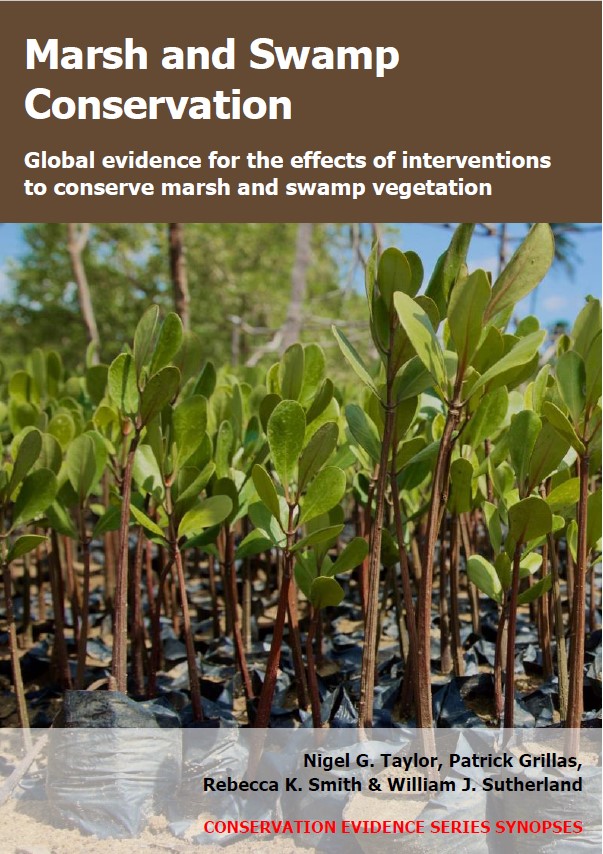Remove plant litter: freshwater marshes
-
Overall effectiveness category Unknown effectiveness (limited evidence)
-
Number of studies: 1
View assessment score
Hide assessment score
How is the evidence assessed?
-
Effectiveness
50% -
Certainty
30% -
Harms
0%
Study locations
Supporting evidence from individual studies
A replicated, paired, controlled study in 1992–1993 in five freshwater marshes undergoing restoration in New York State, USA (Brown & Bedford 1997) found that plots cleared of plant litter contained a more wetland-characteristic plant community and greater cover of wetland plant species than uncleared plots after one growing season, but that these effects disappeared after two growing seasons. After one growing season, cleared plots contained a plant community more characteristic of wetland conditions than uncleared plots (data reported as a wetland indicator index). Cleared plots also had greater total cover of wetland plants (cleared: 24%; uncleared: 19%). The number of wetland plant species did not significantly differ between treatments (cleared: 2.4; uncleared: 2.0 species/plot). After two growing seasons, all metrics were statistically similar under both treatments: community composition, wetland plant cover (cleared: 67%; uncleared: 54%) and wetland plant richness (cleared: 3.7; uncleared: 2.8 species/plot). Methods: In May 1992, twenty 0.25-m2 plots were established across five recently rewetted sites (drained for ≥40 years previously). In five plots (one plot/site), all surface litter and plant stems were removed. Litter was left in the other 15 plots (three plots/site). Plant species and cover were recorded in autumn 1992 and 1993.
Study and other actions tested
Where has this evidence come from?
List of journals searched by synopsis
All the journals searched for all synopses
This Action forms part of the Action Synopsis:
Marsh and Swamp Conservation
Marsh and Swamp Conservation - Published 2021
Marsh and Swamp Synopsis





)_2023.JPG)














